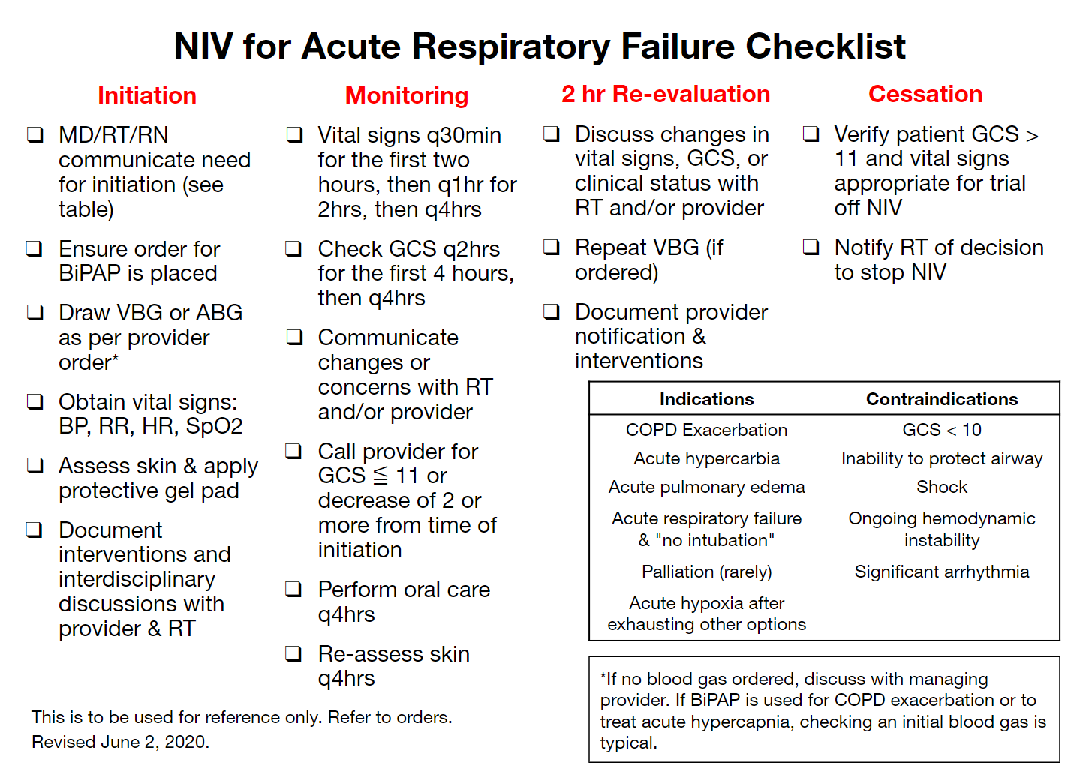Background: Noninvasive ventilation (NIV) is frequently used to treat patients admitted with acute respiratory failure in both the intensive care and progressive care settings. While often perceived to be safer than invasive mechanical ventilation, many pitfalls and technical difficulties can arise when this modality is used in a setting that is less monitored than the formal intensive care unit. Bilevel noninvasive positive pressure ventilation has been used for many years in noncritical care areas in a large tertiary care hospital in the United States. Due to a safety event occurring with NIV in a progressive care unit in the hospital, an informal root cause analysis was performed and several system-related interventions were identified including improved availability of nurse charting spaces near rooms with lower visibility, education on noninvasive ventilation, an improved BiPAP order in the EMR, and finally a checklist was developed to help guide the multidisciplinary team with this modality.
Purpose: This checklist intervention was developed to improve multidisciplinary teamwork when noninvasive ventilation is used to treat acute respiratory failure in order to prevent future safety events and improve quality and consistency of care at the bedside. The tool is primarily targeted at bedside nursing in order to help facilitate conversations with the respiratory therapist and ordering physician. Additionally, the checklist also serves as an educational tool, as noninvasive ventilation is a treatment modality less commonly encountered by many nurses who primarily work in a medical-surgical context.
Description: The checklist list breaks the process down into 4 major phases: Initiation, Monitoring, 2-hour reevaluation, and Cessation. Key communication items and assessment of mental status and vital signs are listed for each section. Additionally, primary indications for use of the modality as well as important contraindications are listed for reference.
Conclusions: A checklist can be used as a clinical tool at the bedside to improve the safety and quality of non-invasive ventilation in noncritical care inpatient areas. Before and after deployment surveys are being collected to assess the size of effect.

